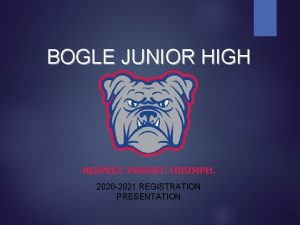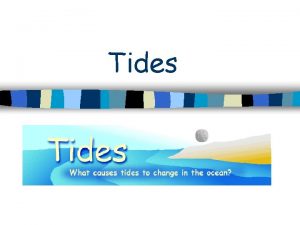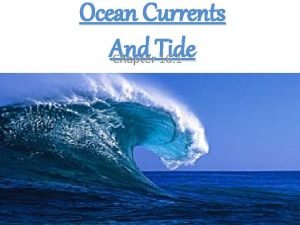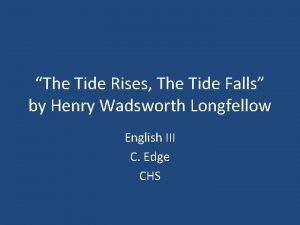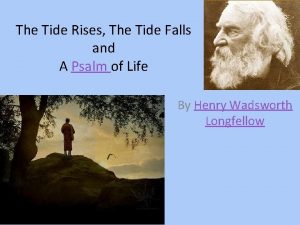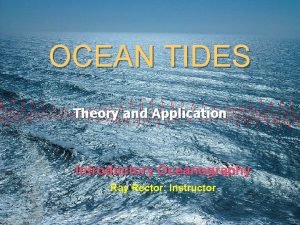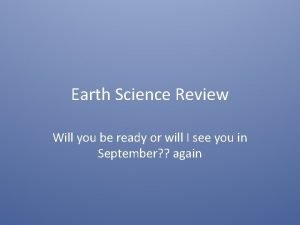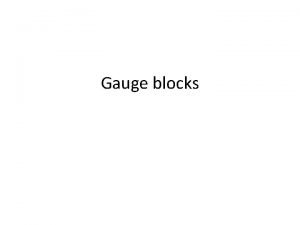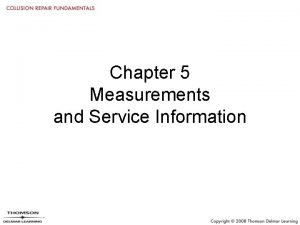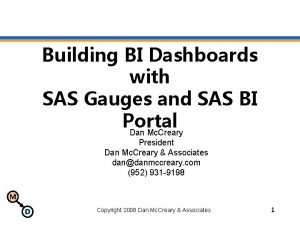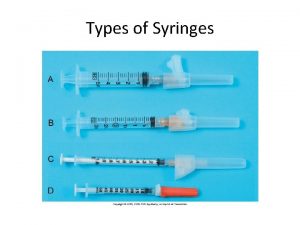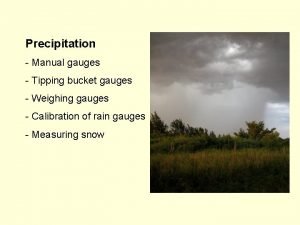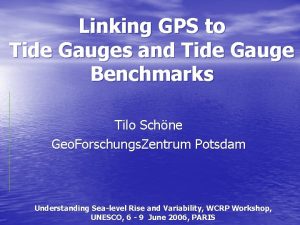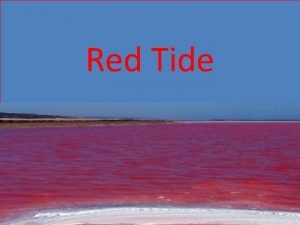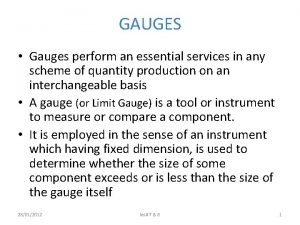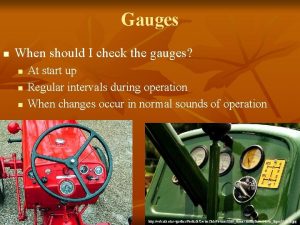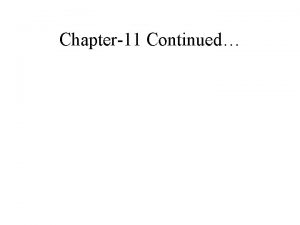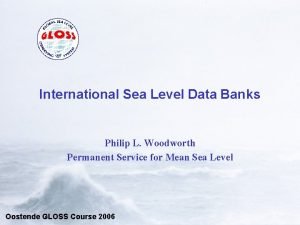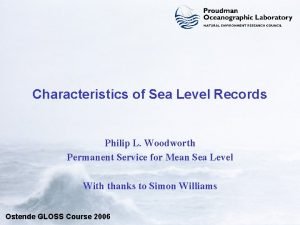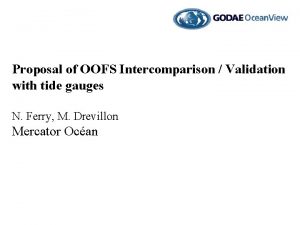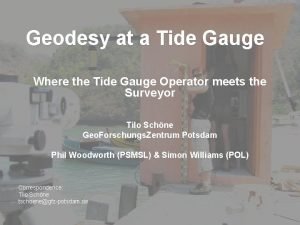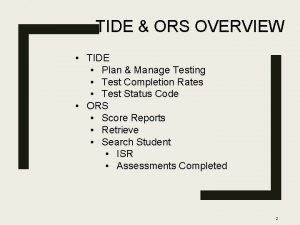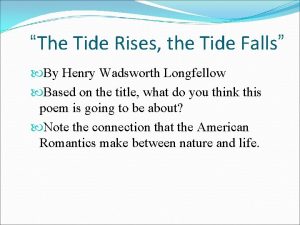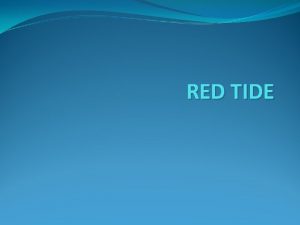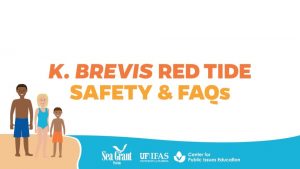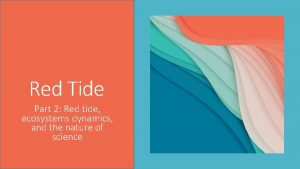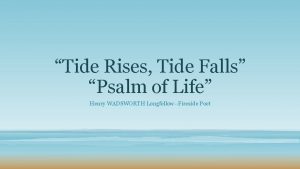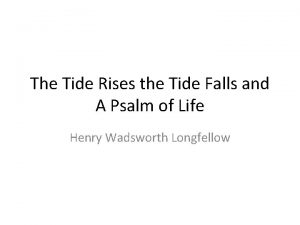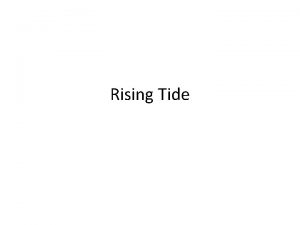Tide Gauges Philip L Woodworth Permanent Service for















































- Slides: 47

Tide Gauges Philip L. Woodworth Permanent Service for Mean Sea Level www. pol. ac. uk

Contents - General • Tide poles as ‘gauges’ and as level checks • Float tide gauges • Acoustic gauges in tube e. g. Next Generation or SEAFRAME systems • Acoustic gauges in open air • Pressure gauges • Radar gauges Contents – ODINAFRICA • Gauges purchased for ODINAFRICA • Mountings for radar gauges

General References IOC Manuals I-IV, especially Manual IV These can be downloaded from http: //www. pol. ac. uk/psmsl/training/


Tide Pole (or Tide Staff) Gauges



Tide pole gauges • The simplest possible system, and lowest cost • Very educational • Important common sense ‘reality check’ alongside modern black box digital tide gauge systems Of course, tide poles have not for many years been a primary source of sea level data. However, it is always worth having a simple tide pole at every gauge site as a check. Although they are simple, there is a need for datum control, just as there is for more expensive and complicated gauges

Float Gauges

Classical Float Gauge

Lea chart recorder for a float gauge (photo taken in 1983)

Importance of Float Gauges • They still form a large part of the global network • No need for paper charts now. They can be made digital with the use of shaft encoders • Even if they are now being replaced with acoustic, pressure and radar systems, they were the source of most of the historical record

UK Float Gauge at Holyhead Float gauges are still important components of GLOSS and can be made into digital gauges with the use of encoders

Classical stilling well float gauge from the US east coast high tidal range area

Acoustic Gauges

Acoustic gauges • Acoustic systems in tube with Aquatrak transducer (NGWLMS or SEAFRAME) with various data loggers. These are now something of a GLOSS standard in many areas • Acoustic systems in open air or inside the stilling wells of float gauges. Cheap but several groups have not been successful in operating them to good standards

Schematic of the NGWLMS/SEAFRAME system

Acoustic SEAFRAME Gauge in Australia

SRD Tide Monitor in a well or in open air – Spain and South Africa have used these not very successfully. Similar systems are manufactured by other companies e. g. MORS

Pressure Gauges

Pressure gauges • Bubbler gauges • Transducer in the sea gauges • ‘B’ (or ‘triple’) pressure systems


The UK National Tide Gauge Network • 45 stations. • Real-time data used for flood warning. • Delayed-mode data quality controlled for scientific research.


Schematic of the transducer in the sea pressure system Most Appropriate for Tsunami Monitoring

Schematic illustration of a Triple (or ‘B’) pressure gauge setup containing three pressure transducers -This can provide ongoing datum control to the ‘C’ data but can be very expensive

Installation of a ‘B’ gauge – See IOC Manual 4 for more details

Radar Gauges

Merits of Radar Gauges • Relatively cheap • Easily installed (no need for divers or stilling wells etc. ) • Digital so can be ‘real time’ • New technology, but experience so far generally favourable • Several manufacturers • But that means not all can be rigorously tested


Liverpool - UK

South Africa




Kirinda – Sri Lanka

Kalesto Calibration So far as we know, the Kalesto data do not contain an instrumental drift. BUT it is necessary to calibrate the system at regular intervals: (1) To provide an initial levelling calibration of Kalesto data relative to the heights of benchmarks (2)And (3)(2) To make sure that the calibration does not change with time (4) See Calibration Document

Benchmarks A set of at least 5 benchmarks near to the gauge is required by GLOSS standards, of which one will be the main Tide Gauge Benchmark (TGBM) These should be levelled regularly (e. g. annually) and their levels should be documented by means of ‘RLR diagrams’, with the information passed to PSMSL etc.



Tide Gauges in ODINAFRICA

ODINAFRICA tide gauges • Radar gauge (OTT Kalesto) ‘tide gauge’ • Pressure gauge as backup to radar and for high frequency sampling ‘tsunami gauge’ • Second pressure gauge as datum check • Data logger (OTT Logosens) • OTT HDR Meteosat DCP • Second telemetry method (e. g. phone, other satellite) • Harbour units for local display

Infrastructure needed • An arm for the radar gauge • Mountings for the pressure sensors (one below tide and one at approximately MSL) • A simple stilling well for calibration checks • Also power etc. • Note that technical details will be discussed by Peter Foden and Ruth Farre later in the week

As used at Pemba

As used at Liverpool

Progress so far • Identification of realistic new sites Done • Identification of good local contacts Done • Local surveys by consultant – many issues (suitable site, telemetry, security) Done • Purchase appropriate equipment Done • Installation – combination local/consultants • Maintenance - many small problems, distances, problems start after installation! • Ongoing calibration

Things to consider about use of data when the tide gauges are working: Data flow and getting data and products to users: • Local harbour display • Otherwise data goes to UHSLC and Ostend Centre • Can local real-time applications be identified? • Delayed mode quality control and archiving at UHSLC. Can local D-M applications be identified (tide tables, extreme levels …) ? • In future, we want to build on our achievements (e. g. GPS at tide gauges). Ideas?
 William woodworth
William woodworth Bogle jr high
Bogle jr high The difference between spring tides and neap tides
The difference between spring tides and neap tides Spring and neap tides
Spring and neap tides The tide rises the tide falls poem
The tide rises the tide falls poem The tide rises, the tide falls
The tide rises, the tide falls Essentials of oceanography
Essentials of oceanography Neap tide spring tide
Neap tide spring tide Slip gauges
Slip gauges Tram gauges are used to measure
Tram gauges are used to measure Sas ods excel
Sas ods excel Ventrogluteal injection sites
Ventrogluteal injection sites Kontinuitetshantering
Kontinuitetshantering Novell typiska drag
Novell typiska drag Tack för att ni lyssnade bild
Tack för att ni lyssnade bild Ekologiskt fotavtryck
Ekologiskt fotavtryck Shingelfrisyren
Shingelfrisyren En lathund för arbete med kontinuitetshantering
En lathund för arbete med kontinuitetshantering Adressändring ideell förening
Adressändring ideell förening Vilotidsbok
Vilotidsbok Sura för anatom
Sura för anatom Densitet vatten
Densitet vatten Datorkunskap för nybörjare
Datorkunskap för nybörjare Tack för att ni lyssnade bild
Tack för att ni lyssnade bild Debattartikel struktur
Debattartikel struktur För och nackdelar med firo
För och nackdelar med firo Nyckelkompetenser för livslångt lärande
Nyckelkompetenser för livslångt lärande Påbyggnader för flakfordon
Påbyggnader för flakfordon Vätsketryck formel
Vätsketryck formel Offentlig förvaltning
Offentlig förvaltning Urban torhamn
Urban torhamn Presentera för publik crossboss
Presentera för publik crossboss Vad är ett minoritetsspråk
Vad är ett minoritetsspråk Bat mitza
Bat mitza Treserva lathund
Treserva lathund Mjälthilus
Mjälthilus Claes martinsson
Claes martinsson Cks
Cks Programskede byggprocessen
Programskede byggprocessen Bra mat för unga idrottare
Bra mat för unga idrottare Verktyg för automatisering av utbetalningar
Verktyg för automatisering av utbetalningar Rutin för avvikelsehantering
Rutin för avvikelsehantering Smärtskolan kunskap för livet
Smärtskolan kunskap för livet Ministerstyre för och nackdelar
Ministerstyre för och nackdelar Tack för att ni har lyssnat
Tack för att ni har lyssnat Vad är referatmarkeringar
Vad är referatmarkeringar Redogör för vad psykologi är
Redogör för vad psykologi är Matematisk modellering eksempel
Matematisk modellering eksempel

